One day as I was reading travel blogs, I found a really interesting post on St. Augustine, Florida. I’ve heard of the town before, and saw it on the map, but never considered it an actual destination for my travels. I traveled there with my family, and I was surprised, there are so many interesting things to learn there. Here’s St. Augustine’s history and facts I learned from my visit.
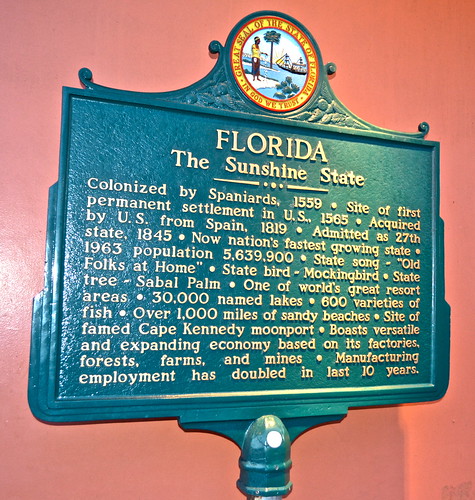
But as I continued reading about the importance of this tiny city and its role in how the US began, plus learning that this is the same place that Ponce de Leon searched for the Fountain of Youth I started to get that burning desire I get when I want to visit somewhere. So with all the power of travel invested in me, I made it happen for my family.
Educational travel is something that I am navigating more and more towards. With two young kids going to places that they can actually learn something other than the ocean water is warmer here than there, is a big deal. And St. Augustine was as educational as they get.
Go to the St Augustine Pirate Museum for an Educational Travel
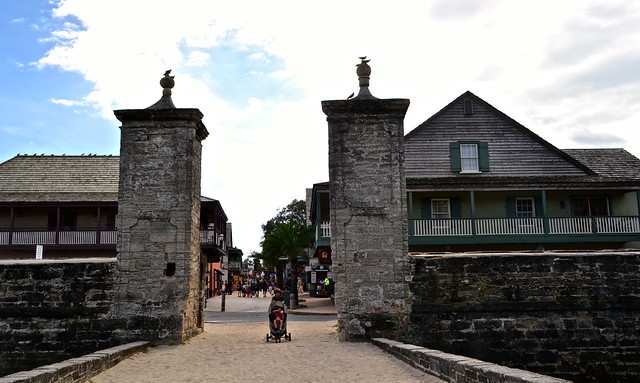
The greatest surprise of all was the sheer adorableness and quaintness of this city. Overall the whole place is walkable, especially in the Historic district. The narrow streets and gorgeous old homes with trees hanging over them made me think more of the old south rather than a city in Florida. But the most fun was discovering St. George Street which is closed-off to pedestrian traffic only. And is also home to most of the historic landmarks, restaurants and shops.
If you want to learn more about history, head to St. Augustine’s Spanish Quarter.
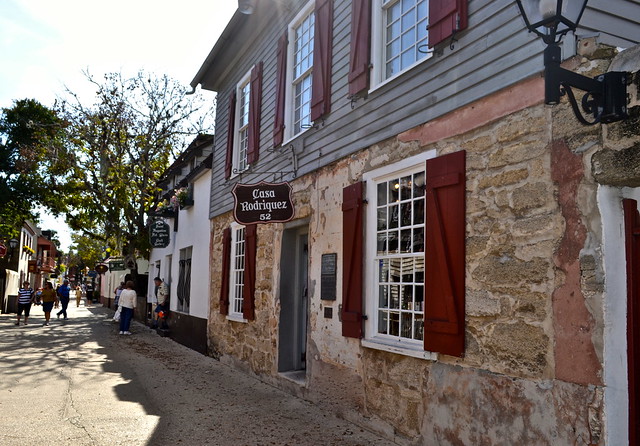
St. Augustine History in a Nutshell
-
The vicinity of St. Augustine was first explored in 1513 by Spanish explorer and governor of Puerto Rico, Juan Ponce de León, who claimed the region for the Spanish crown.
-
Between 1562 and 1564 the French made two attempts to colonize the area and failed.
-
It was founded by the Spaniards in 1565 and became the capital of Florida for over 200 years.
-
Pedro Menéndez de Avilés sighted land on August 28, 1565. As this was the feast day of Augustine of Hippo, the territory was named San Agustín. You can still find the remains of their first fort in what is now the Fountain of Youth Archaeological Park.
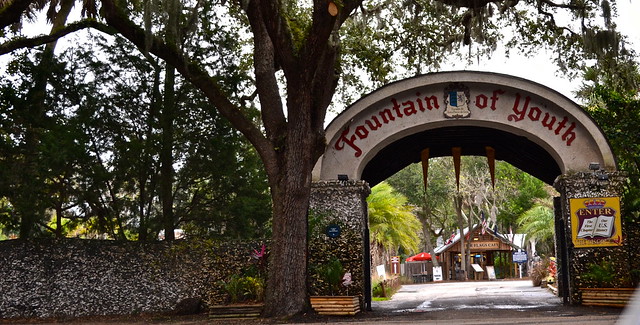
-
Shortly after the arrival of the Spaniards, one of the Frenchmen who failed to colonize the area tried to steal the fort from Ménendez but failed.
-
1566, Martín de Argüelles was born in San Agustín, the first European child who was recorded as born in the continental United States.
-
Also, in 1566 Saturiwa, a hostile native community burned down St. Augustine. It had to be relocated.
-
In april 1568 the French soldier Dominique de Gourgues led an attack on Spanish holdings.
-
June 6, 1586, English privateer Sir Francis Drake raided St. Augustine, burning it and driving surviving Spanish settlers into the wilderness. But he lacked sufficient forces or authority to establish an English settlement and had to leave the area.
-
In 1668 English privateer Robert Searle attacked and plundered St. Augustine. In the aftermath of his raid, the Spanish began in 1672 to construct a more secure fortification, the Castillo de San Marcos.
-
As the British created settlements south, along the coast, and encouraged slaves to escape for sanctuary. If they converted to Catholicism and swore allegiance to the king of Spain they were given freedom. In 1938 Fort Mose was legally recognized as a free community of former slaves.
-
In 1740 British forces unsuccessfully attacked St. Augustine from their colonies in the Carolinas and Georgia. Fort Mose proved to be very important during these attacks.
-
In 1763, the Treaty of Paris ended the Seven Years’ War. Spain ceded Florida and St. Augustine to the British.
-
James Grant was appointed the first governor of East Florida in 1764.
-
The Treaty of Paris in 1783, gave the American colonies north of Florida their independence and ceded Florida to Spain in recognition of Spanish efforts on behalf of the American colonies during the war.
-
The second Spanish period only lasted until 1821 when Florida was turned over to the US peacefully.
-
Castillo de San Marcos was renamed “Swam Fox” in 1821. It was later used during the Semiole War as prison from where 22 prisoners managed to escape.
-
In 1861, the American Civil War began; Florida seceded from the Union and joined the Confederacy.
-
After the war in 1866, freedmen in St. Augustine established the community of Lincolnville, named after President Abraham Lincoln. It became a key setting for the Civil Rights Movement in St. Augustine a century later.
-
Henry Flagler, a partner with John D. Rockefeller in Standard Oil, arrived in St. Augustine in the 1880s. He was the driving force behind turning the city into a winter resort for the wealthy northern elite.
-
Flagler commissioned the New York architectural firm Carrère and Hastings to design a number of extravagant buildings in St. Augustine, among them the Ponce de Leon Hotel and the Alcazar Hotel.
-
In the 1880s, the waiters at his hotels, under the leadership of Frank P. Thompson, formed one of America’s pioneer professional Negro League baseball teams, the Ponce de Leon Giants.
-
The St. Augustine Alligator Farm, incorporated in 1908, in the 21st century, is one of the oldest commercial tourist attractions in Florida.
-
Historic Excelsior School, built in 1925 as the first public high school for blacks in St. Augustine, has been adapted as the city’s first museum of African-American history.
Facts About St Augustine
-
St. Augustine was the first city in America, making it the oldest city in the United States.
-
The legendary spring, the Fountain of Youth, made famous by explorer Ponce de Leon, is in St. Augustine and located on what is now known as the Fountain of Youth Archaeological Park.
-
St. Augustine has its own Ripley’s Believe It or Not Museum with oddities, useless facts, and interesting sights.
-
St. Augustine has three forts that guard it. Castillo de San Marcos, Fort Mantanzas, and Fort Mose were all built to protect the city.
-
The Castillo de San Marcos is the oldest masonry fort in the continental United States. Its construction took a quarter of a century, with many later additions and modifications.
-
St. Augustine has the narrowest street in the U.S. – Treasury Street is only 7 feet wide!
-
St. Augustine also has the oldest port in the continental United States.
-
The oldest schoolhouse of the country is also in St. Augustine. It was built in 1716.
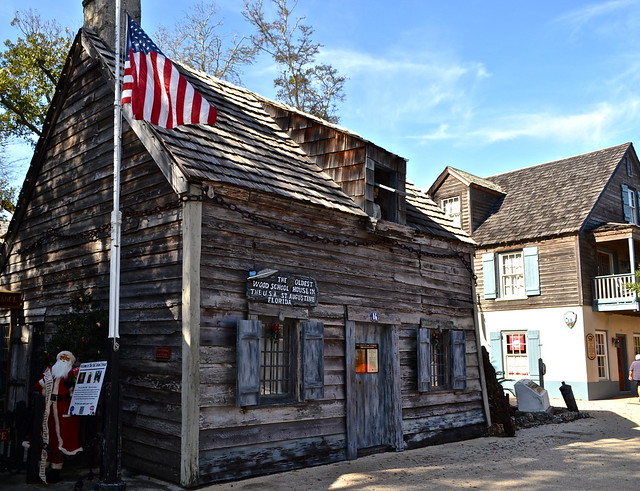
-
In territory under the jurisdiction of the United States, only Puerto Rico has continuously occupied European-established settlements older than St. Augustine.
-
The city has a privately funded Freedom Trail of historic sites of the civil rights movement, and a museum at the Fort Mose site, the location of the 1738 free black community.
-
Potter’s Wax Museum is the oldest wax museum in the country, predating Madame Tussaud’s and even the famed Hollywood Wax Museum. The museum features about 200 figures.
-
The Great Cross is 208 feet tall and made of stainless steel. It is on the grounds of the Mission of Nombre de Dios (off San Marco Avenue), part of the St. Augustine colony in 1565.
-
It is the only place in Florida where Dr. Martin Luther King Jr. was arrested during a non-violent attempt to eat at the former Monson Restaurant.
-
The most famous alumnus of the Florida School for the Deaf and the Blind in St. Augustine is the famed soul singer Ray Charles.
Video Fun
Where the US Began – St. Augustine History – 501 Years Young
The post St Augustine History: Where The African American History Began appeared first on Travel Experta - Travel, Lifestyle, Freedom.
----------------------------------------------------------------------------------------
By: Marina 'Travel Experta'
Title: St Augustine History: Where The African American History Began
Sourced From: travelexperta.com/st-augustine-history-and-facts/
Published Date: Mon, 27 Feb 2023 11:00:17 +0000






